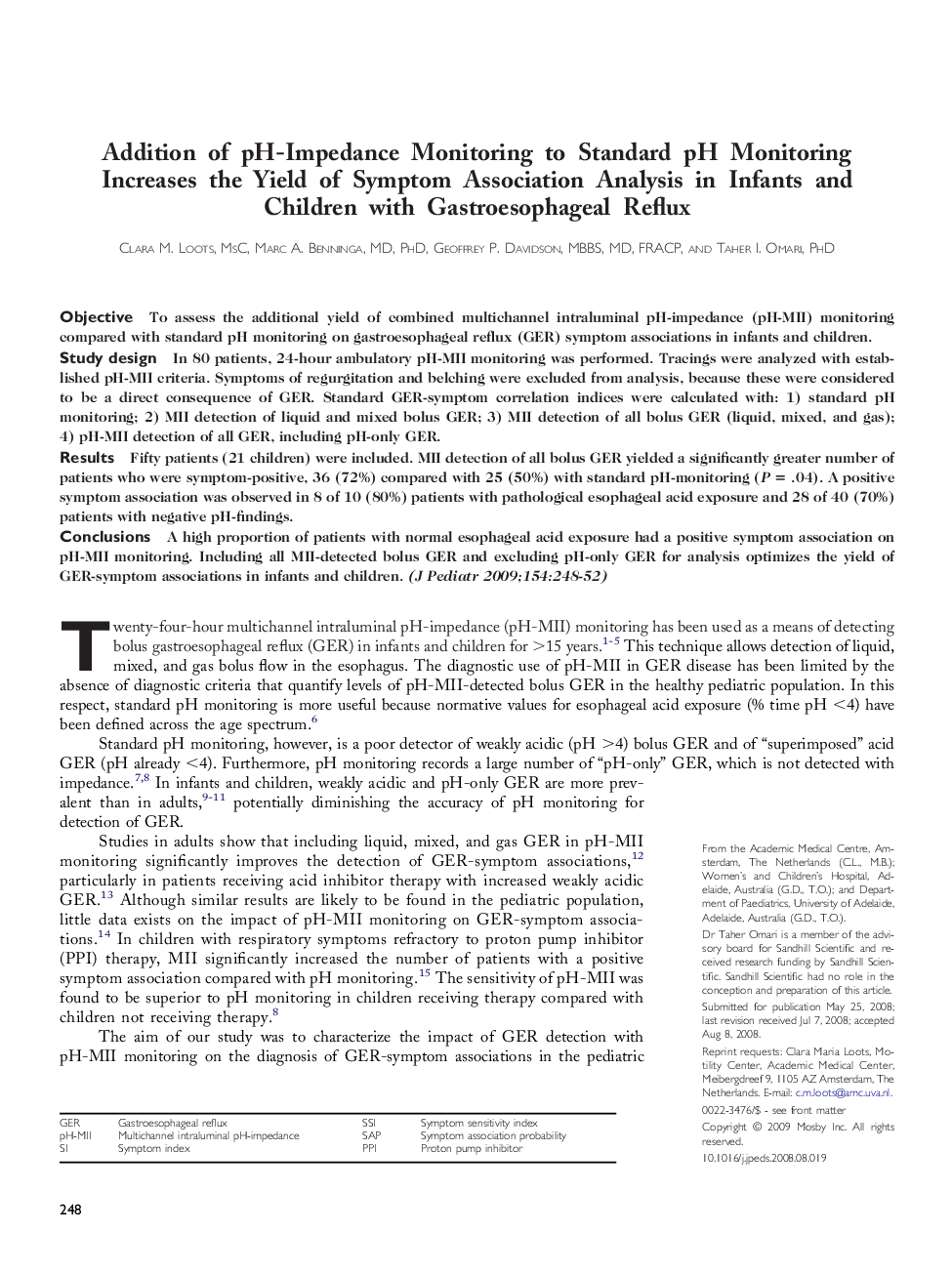| Article ID | Journal | Published Year | Pages | File Type |
|---|---|---|---|---|
| 4166800 | The Journal of Pediatrics | 2009 | 5 Pages |
ObjectiveTo assess the additional yield of combined multichannel intraluminal pH-impedance (pH-MII) monitoring compared with standard pH monitoring on gastroesophageal reflux (GER) symptom associations in infants and children.Study designIn 80 patients, 24-hour ambulatory pH-MII monitoring was performed. Tracings were analyzed with established pH-MII criteria. Symptoms of regurgitation and belching were excluded from analysis, because these were considered to be a direct consequence of GER. Standard GER-symptom correlation indices were calculated with: 1) standard pH monitoring; 2) MII detection of liquid and mixed bolus GER; 3) MII detection of all bolus GER (liquid, mixed, and gas); 4) pH-MII detection of all GER, including pH-only GER.ResultsFifty patients (21 children) were included. MII detection of all bolus GER yielded a significantly greater number of patients who were symptom-positive, 36 (72%) compared with 25 (50%) with standard pH-monitoring (P = .04). A positive symptom association was observed in 8 of 10 (80%) patients with pathological esophageal acid exposure and 28 of 40 (70%) patients with negative pH-findings.ConclusionsA high proportion of patients with normal esophageal acid exposure had a positive symptom association on pH-MII monitoring. Including all MII-detected bolus GER and excluding pH-only GER for analysis optimizes the yield of GER-symptom associations in infants and children.
